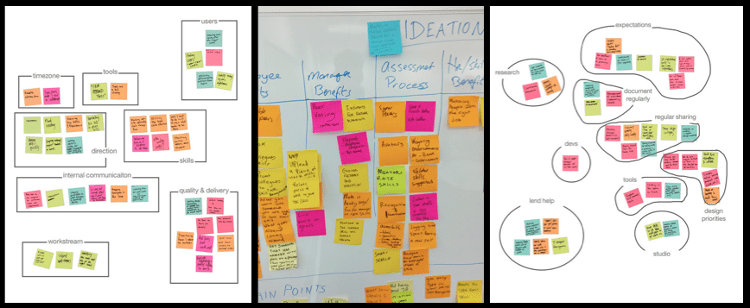
Don't Spring a Brainstorming Session on Your Team, Do This Instead
"Hey everyone! Gather in the conference room for a spur of the moment brainstorming session!"
When organizational leaders announce this employees react differently. The outspoken extroverts are excited to share their big ideas. Their minds are already churning with input they are excited to share during the meeting.
But the quiet introverts, the ones who have hundreds of ideas they are too shy to share with a spotlight on them, are dreading the brainstorming session. They know any good ideas they have will be drowned out by the more outspoken teammates.
"Brainstorming is powerful, but it’s not perfect. If you aren’t careful, traditional group brainstorming tends to favor the quick thinkers and the loudest voices in the room. Quieter, introverted personalities (and their ideas) can easily get left out of the conversation." (Lucidspark blog)
It's not just an introvert vs. extrovert dilemma. Group brainstorming can also become a popularity contest. For one, nobody wants to tell the boss they don't like his or her idea. Also, nobody wants to vote against their office best friend's idea.
What's the solution? It's simple:
Lead on Purpose
If leaders are striving to Lead on Purpose, they need to be intentional with how they ask for brainstorming input in order to generate the best ideas. This means managers don't fling the idea of a group brainstorming session on teams.
Instead, leaders make a deliberate plan for a successful group brainstorming session. I recommend using one of these group brainstorming strategies.
4 Group Brainstorming Techniques

Courtesy of Magdalena Toza on Medium
1. Brainwriting: This technique allows the shy introvert to write down their ideas rather than sharing them out loud with an audience. A popular form of brainstorm, when brainwriting everyone writes their idea down on a piece of paper or sticky note. Then the papers get shuffled around and a different teammate builds onto the initial idea. The papers can get passed around to every teammate or a certain number of rounds. After the final round, the moderator collects everyone's worksheets, then displays and talks through every suggestion made.

Courtesy of AnyType Community
2. Mind Mapping: A group mind map involves writing down a central theme and brainstorming new and related ideas which radiate out from the central theme. Begin by writing the central topic on a whiteboard or online collaborative tool. Then write each teammate's ideas on a branch off the center. Make sure every teammate gets their own branch to include everyone in the brainstorming session. Mind mapping makes it easy to share ideas in a visual and collaborative manner.

Courtesy of IBM Garage Methodology
3. Rapid Ideation: The purpose of rapid ideation is to produce an abundance of ideas in a short amount of time. Allow employees the opportunity to free write ideas off the top of their minds. The short time frame removes judgements and other constraints. Employees don't have time to think 'is this too expensive, too crazy, too out-of-the box?' Rapid ideation can lead to highly innovative and unanticipated solutions to complex problems.

Courtesy of Project Bliss
4. Starbursting: This brainstorming technique prompts your team to create questions before answers. Create a star and label each point of the star with "Who?" “What?” “When?” “Where?” “Why?” and “How?” These questions encourage participants to expand their thinking and come up with creative solutions. Employees then approach the subject from different angles to generate a variety of ideas leading to protentional solutions.
Allow Your Team to Prepare
My final piece of advice: Provide the brainstorming topics prior to the meeting. Allow the slow thinkers the ability to come up with fresh ideas that they can share in a meaningful way.
After collecting everyone's ideas, you can even present all ideas without any attribution to individual team members. By not attaching ideas to an employees' name, the discussion will be based on the idea's merit and not the team members popularity.
Then discuss these ideas during the group brainstorming session. In this way, you remove the anchoring effect, where employees quit brainstorming midway through the meeting to focus on the initial ideas proposed.
You also won't have the loudest voices being the only ones heard. All personality types can bring their great ideas to the table and be heard. Additionally, all ideas can be introduced before delving further into any one proposal.
Leaders believe group brainstorming is the best way to get everyone's input and empower employees to share out-of-the-box thinking. Anyone in the office could create the next big thing and who wouldn't like that? Actually, many employees don't feel impromptu group brainstorming is a good way to make their voices heard. But by utilizing these techniques, whether in-person or virtually, leaders can better provide every employee the opportunity to provide creative ideas and solutions for the organization.
Want to learn how we can help engage all employees whether extroverts or introverts, in-person or virtual?









